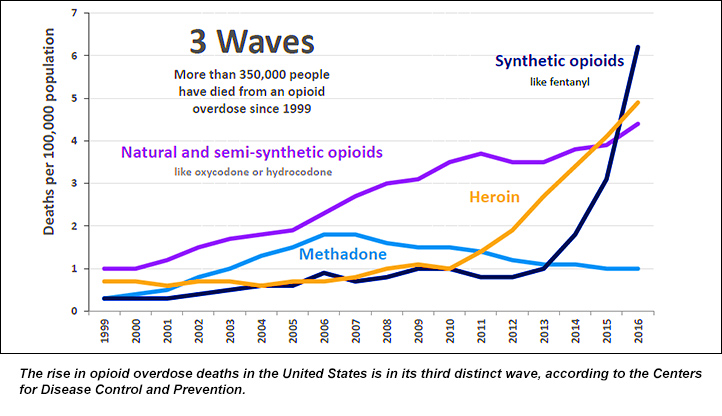

The federal group that developed the 2016 guideline for how primary care providers should manage opioids and chronic pain revealed this week plans to estimate opioid prescribing rates for various medical conditions and procedures.
This new project, said Christina Mikosz of the National Center for Injury Prevention and Control at the Centers for Disease Control and Prevention (CDC), “aligns with our efforts to prevent opioid misuse, abuse, and overdose.”
One of those efforts was the National Center for Injury Prevention and Control’s development of the CDC Guideline for Prescribing Opioids for Chronic Pain — United States, 2016.
“The new project ... is meant to inform upstream health strategies to curtail this troubling epidemic,” Mikosz told the National Center for Injury Prevention and Control’s Board of Scientific Counselors (BSC) on Tuesday during a public meeting held in Atlanta.
Despite issuance of multiple clinical guidelines by various groups, the epidemic has not abated, she said.
Recent research has found differences between the amount of opioid prescribed to postoperative patients on discharge and the amount of opioid used by these patients when home, Mikosz mentioned as an example. These differences result in leftover opioids, she said, which pose a potential danger to members of patients’ households and the community.
“Also, some research notes a disconnect between the amount of opioids prescribed versus subjective reports of pain by patients,” Mikosz said. In some instances, she said, the reported pain probably could have been effectively treated without opioids.
The public meeting on Tuesday and Wednesday was held in part to garner the approval of the BSC to establish “BSC Workgroup: Opioid Prescribing Estimates.”
This workgroup’s purpose is to guide the National Center for Injury Prevention and Control in the process of estimating opioid prescribing rates or reference points for specific types of acute and chronic pain, said Associate Director for Science Arlene Greenspan.
CDC in May had informed ASHP and other groups of this new project.
Through this project, CDC stated, the agency will:
- Estimate current opioid prescribing rates in the United States for various conditions and procedures; these estimates will be based on claims data from a large commercial health insurer.
- Estimate the likely opioid prescribing rates for those conditions and procedures if “best practices” had been followed; the best practices will come from clinical guidelines and related research on opioid prescribing.
- Calculate the necessary changes in current prescribing rates for acute and chronic pain in the United States “to be consistent with best practices.”
The workgroup, Greenspan said, will answer such questions as, What is an appropriate dosage of opioids for a specific diagnosis or procedure?
She said the workgroup will meet four or five times in the coming months and present a report at the next BSC meeting, probably in November or December.
Greenspan recited the names of 50 people whom the National Center for Injury Prevention and Control proposed as members of the workgroup. These proposed workgroup members represent the field of bioethics, patient groups, and 12 clinical specialties that may treat acute and chronic pain.
Suggestions of people for the workgroup may be sent to the center via email until the end of June 22.








